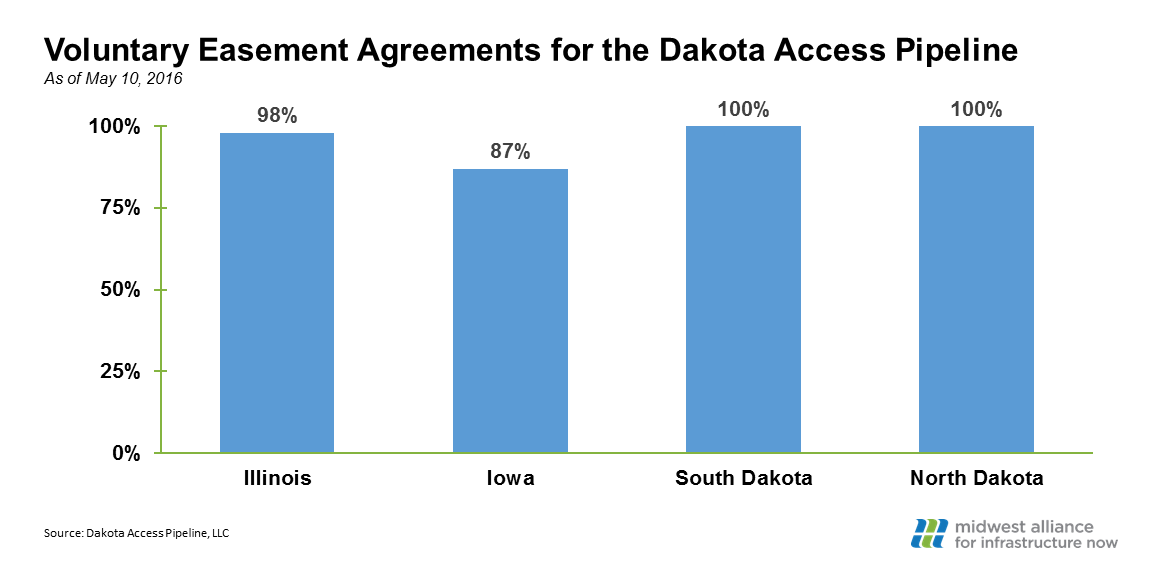
Yesterday, Dakota Access Pipeline announced that it has secured voluntary easements with nearly 96 percent of properties along the pipeline’s four-state route. That number was even higher in North and South Dakota where the company revealed that it has successfully reached agreements with 100 percent of landowners. Dakota Access says it will continue to negotiate easements as it prepares to commence construction of the $3.7 billion, 1,168-mile pipeline project.
During construction, Dakota Access will employ upwards of 12,000 skilled tradesmen from union halls around the region with many communities along the pipeline’s route already preparing for the coming economic boon that will accompany the construction phase of the project. Area retailers, hotel and lodging providers, restaurants, and other small businesses will benefit from a spike in purchases while local governments gain additional sales tax revenue. Once completed, the pipeline will continue to generate state property taxes necessary to support schools, hospitals, and other essential services.
To date, the Dakota Access Pipeline has been approved but utility boards and other relevant regulatory agencies in all four states—Illinois, Iowa, North Dakota, and South Dakota—along the route. The project is currently awaiting its final permit from the U.S. Army Corps of Engineers which has jurisdiction of a mere 3.5 percent of the route or approximately 37 miles out of 1,168.
MAIN Coalition Chairman Ed Wiederstein has recently joined other members in calling for an expedient approval of the outstanding permit, including writing to President Obama last month, as noted by the Des Moines Register:
“With a diverse array of backgrounds and interests in our organizations, we are motivated to ensure that this project is authorized and permitted as soon as possible to allow for the opportunity for working people throughout the Midwest to construct this important infrastructure project and to limit the impact on the farmers whose land this pipeline will cross.”
With the number of voluntary easements continuing to grow it is clear that the time has come to make this critical addition to our national energy infrastructure a reality.